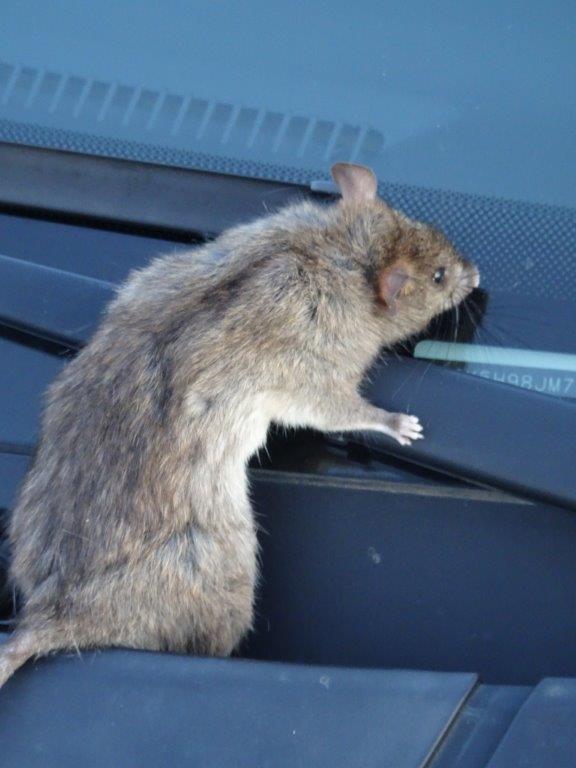Need professional rat help? What does it cost? Go to the home page
I have attached some pictures of damage to my car under a carport. I live in SE Kansas just outside city limits and surrounded by fields. I am trying to figure out what kind of rodent these droppings are from. They look pretty good size. They did $3700 worth of damage in a short period of time. Someone suggested peppermint oil on a cotton ball and change out every 2 weeks in the engine area. Someone else suggested taking the covers off all the units under the hood as they like dark places. Another idea is to keep the hood open. I thought maybe a solar light some how placed in the engine area. I was told the bags of herbs smell they don't like, you can buy don't work. This happened in May also, but only $500, so I have sticker shock now. I have got to find a solution as I am sure it will happen again if I don't. Thanks for any help.My response: Rats and other critters take shelter in automobiles a lot, especially in the frigid cold of winter. Some of them get so comfortable being insulated from the cold and from predators that they actually start to live there. This does not only happen to old or stationery cars too, many a seasoned car mechanic will tell of their encounter with rats in vehicle engine compartments.
Unfortunately, the propensity of rats to gnaw and chew at cables and wires does not auger well for the car owner as they often cause extensive damage under the hood. They cause a whole lot of wiring problems when they chew on wires, especially in hidden places that are hard to spot. Telltale signs of rats living in your car include sightings of droppings and trash, dusty footprints, and nibbled plastic or padding.
METHODS
Getting rid of rats living in your car can be done in the following ways: 1. Prevention is key. If you have had this problem before or if your car is going to be stationery for a while in a rat-prone environment, try prevention. For one, park it in a garage and keep food and seeds away from it. These include pet food, trash cans, bird seed, spray cheese, and what have you. 2. Set up a snap trap. These essentially attract a rat with a food bait and then swiftly clamps down on the rat's neck once the trigger is activated. The rat dies instantly in most cases and can be disposed of properly. In disposing of both rat and trap, ensure that you wear rubber gloves and spray the trap with a ten percent bleach solution to disinfect before discarding it.Go back to the Rats in the Attic home page.









